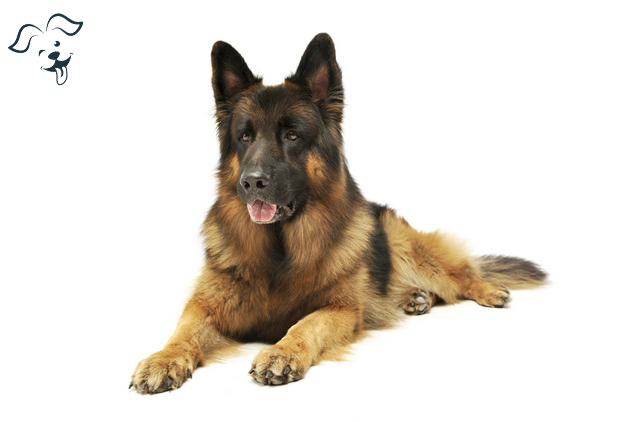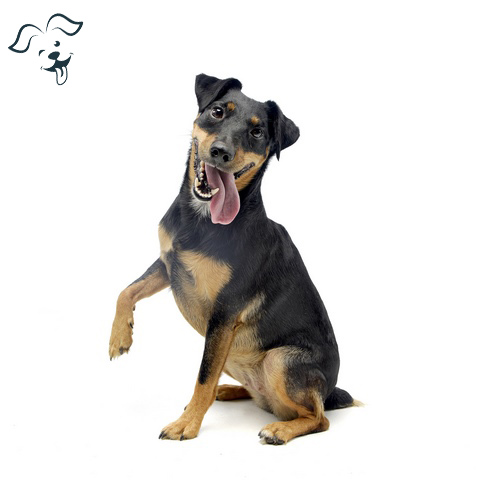Aggressive Dogs Introduction:
Aggression in dogs alludes to a run of actions that are aiming to scarify, undermine, or hurt another critter or existent. It can show in different shapes, counting snarling, and woofing, snapping, lurching, or eating. Enmity in doggies can be actuated by fear, territoriality, possessiveness, social status, pain, sickness, or a need for socialization or preparation. Aggression in dogs can pose genuine troubles to both other brutes and people and constantly requires complete supplication, counting geste revision styles, preparing, and in some cases medicinal. Canine possessors must get it the introductory causes of hostility in their mutts and work with good experts to address and oversee the geste viably. Beforehand supplication and applicable preparation are crucial to overseeing and lessening hostility in doggies.
Origin of aggression in dogs:
Tracing back the domestication of dogs:
The domestication of mutts is accepted to have happened around 20,000 to 40,000 a long time ago, making them one of the most immediately regulated animals. The precise timeline and area of doggy reining are still subjects of progressing interrogation and are talked about among experimenters. Be that as it may, it's astronomically conceded that doggies are cousins of wolves( Canis lupus). The system of reining likely started when wolves began digging close to mortal campgrounds for redundant aliment. Over time, those wolves that were more tolerant of mortal nearness and less forceful may have created a mutualistic relationship with people. This early commerce may have given benefits to both species, driving a slow co-evolution that formed the characteristics of advanced ménage doggies.
Evolutionary factors influencing behavior:
The reining handle has had a critical effect on the geste and morphology of canines. As people are chosen for particular characteristics, similar to harmlessness, invitingness, and trainability, over ages, doggies endured heritable changes. This specific parentage is brought about within the wide multifariousness of canine types we see currently, each acclimated to perform particular errands or meet certain inclinations. Behavioral characteristics affected by advancement incorporate social geste, communication, and the capacity to produce solid bonds with people. Wolves are pack brutes, and doggies have held many of these social inclinations. The capacity to work agreeably with people and understand mortal signals has been a crucial figure in the fruitful reining and integration of mutts into mortal social orders.
How domestication affects aggression:
Reining has by and large lowered the position of hostility in dogs compared to their wild forerunners. The choice for characteristics that make doggies more harmonious with mortal ways of life has driven a dwindling in forceful actions. Whereas certain types may still display protective spontaneous or indigenous actions, generally, ménage mutts are less forceful than wolves. In any case, it's abecedarian to fete that person contrasts live among dogs, and variables similar as heritable rates, nonage, preparation, and socialization can impact geste.
Class Recognition and Aggression of Dogs:
Understanding breed history is important for evaluating tacit aggression in dogs as various breeds may show different mannerism and behavioral inclinations based on their inheritance.
Following are examples of different breeds known for their aggressive behaviors:
Pit Bulls:
Numerous locales have called BSL (Breed Specific Legislation) on pit bulls, because pit bulls are famous for their enmity. Similar laws constantly command gagging, protections prerequisites, or through and through bans, in malignancy of feedback for unreasonably stigmatizing the strain.
Rottweilers:
Many wards force confinements on Rottweilers due to their effective construct and protective spontaneity. Be that as it may, carpers contend that a person geste, not breed, ought to decide direction.
German Shepherds:

In malignancy of their notoriety in law authorization and as benefit doggies, German Goatherds also defy strain-specific enactment. Carpers fight that similar laws neglect the significance of applicable preparation and socialization.
Advantages/Disadvantages/challenges of aggressive dogs:
Advantages:
Security and Assurance
Types with protective spontaneity, similar to German Shepherds, Rottweilers, and Doberman Pinschers, can offer an increased sense of security to their possessors and families. Their characteristic slant to secure their sphere and adored bones can help implicit interferers and give a sense of security.
Responsibility and Fidelity
These types constantly show solid bonds with their possessors and families. Their devotion and commitment can make profound and important connections, cultivating fellowship and belief.
Sharpness and Carefulness
Mutts with protective spontaneity tend to be profoundly cautious and vigilant, making them great guard tykes. Their violent faculties can identify abnormal sounds or developments, startling their possessors to implicit troubles or threats.
Certainty and Emphaticness
These breeds on a regular basis have tone-sureness, which can decode into successful authorization. With legal direction and socialization, they can get to be organized and trusty fellow.
Following are few Challenges of having aggressive dogs:
Socialization Prerequisites:
Aggressive breeds have broad acculturation from an early age that give assurance that they give positive actions and reaction towards individuals. Without relevant training, they may show fear, anger or enmity towards strangers.
Steady Preparing and Administration
Training aggressive types needs consistency, willpower, and workable authority. Dog owners must present themselves as calm, strong and confident person to attain the canine's trust and belief. Clashing or cruel training strategies can make aggressive issues worst.
Legal and threat enterprises
Owners of aggressive breeds may go against legal and obligation enterprises, especially if their dog shows aggressive behavior towards individuals or other strangers. In many situations, certain breeds are subject to growling and they may attack, which may force legal departments or enterprises on taking actions.
Prevention and Interventions for Managing Aggression in Dogs:
Canine hostility postures a major concern to dog possessors due to the hazard for damage, popular mischance, and detriment to the mortal- beast bond. A number of inclining factors impact a canine's common edge for enmity heritable inclination, pre-birth terrain, exposures amid early socialization, and natural circumstances. There are a number of conceivable motivational variables, but fear and drive are regularly the introductory variables. A comprehensive treatment arrange for canine hostility includes a chance evaluation,
Customer instruction, tending to any good enterprises, natural administration, geste adaptation, and befitting rectifiers to address abecedarian fear or uneasiness. Natural administration is supposedly the foremost imperative figure, and this composition depicts a number of abecedarian rules which will be executed at the common hone position to set up palm for cases and families. . Puppy dog trainers or behaviorists can estimate the root causes of hostility and knitter benisons in like manner.
They may appear to desensitization and counter-conditioning strategies to acclimate forceful responses. Also, veterinarians can run the show out introductory restorative issues contributing to hostility and plump drugs to oversee behavioral issues. Understanding legal suggestions and scores is significant for dog possessors. Laws shift concerning canine enmity, but possessors are for the utmost part held responsible for their fave' conditioning. In cases of enmity driving to damage or property detriment, possessors may defy licit impacts, counting forfeitures, claims, or indeed killing orders for extreme cases. Reliable procurement involves taking measures to anticipate forceful occurrences, similar to applicable control, supervision, and exercising caution signs for conceivably forceful mutts.
On A Final Note:
Let’s wrap up our discussion around aggressive dogs. It's a matter that is not as direct as it might appear to begin with. We have learned that aggression in mutts is not around their strain or heritable rates. It's a mix of effects like their atmosphere, how they have been raised, and indeed their retained identity tricks. Understanding this complexity is super imperative. See, conceptions of nearly certain breeds don't truly offer backing us illuminate the issue. Any canine, notwithstanding strain, can appear signs of enmity depending on their circumstances. So, what is the nethermost line? Instruction and compassion are crucial. We need to make beyond any mistrustfulness that dog possessors, breeders, and everybody differently know roughly dog geste.
Instructing people nearly the significance of early socialization and positive bastion can truly make a discrepancy. By spreading information and breaking down conceptions, ready to construct a community that is further understanding and aware when it comes to our furry companions. And it's not close to keeping people safe — it's roughly making beyond any mistrustfulness our mutts feel upbeat and secure as well.
Within the conclusion, it's reaching to take all of us working together — veterinarians, canine trainers, and specialists in critter geste to come up with ways to oversee enmity and anticipate it from passing within the first put. Together, ready to make our neighborhoods more secure and our bonds with doggies indeed more predicated. It's around making a world where doggies and people can live together agreeably, understanding each other's requirements and tricks.
